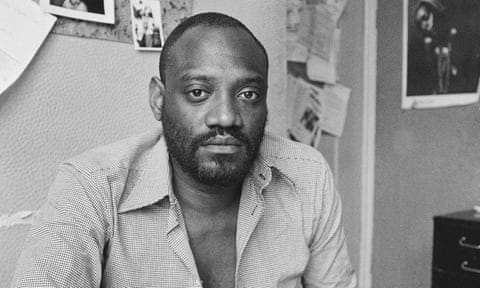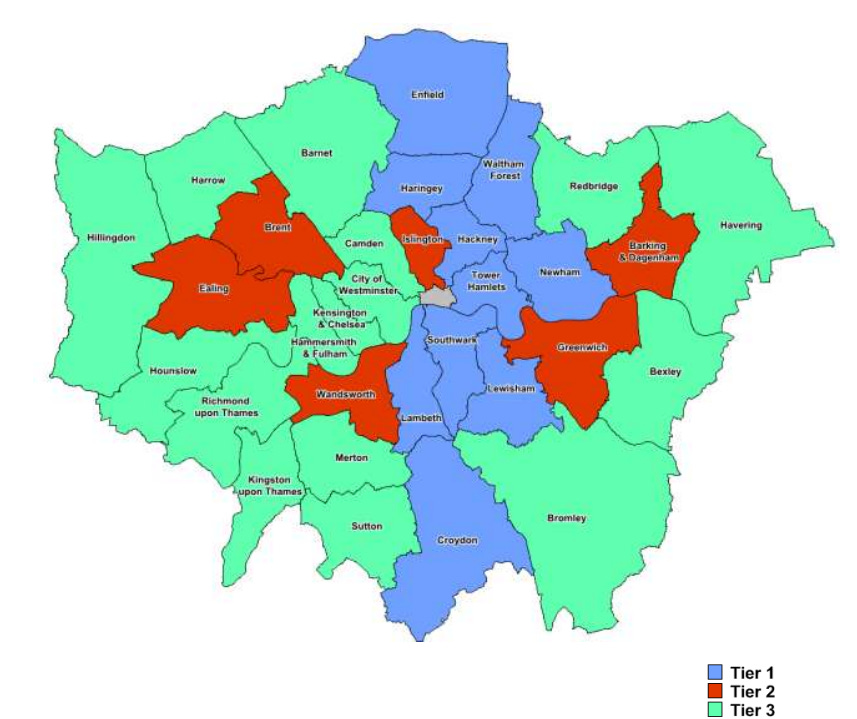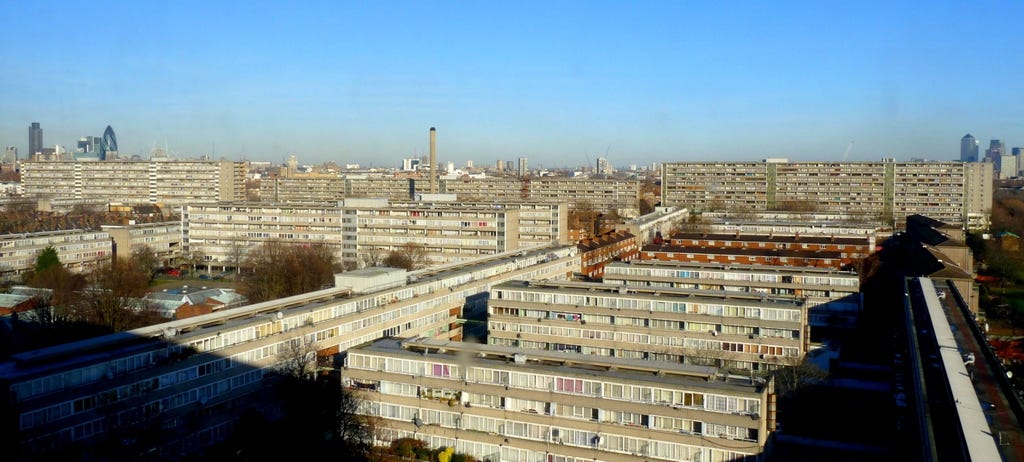War on Poor: Police Violence and Class
Exploring police violence as a working class problem; the connections between race and class; and countering narratives that claim policing is a 'woke' issue the left shouldn't care about.
The Whites Have Become Black
On the August 4th 2011 Mark Duggan, a Black man from Tottenham's Broadwater Farm estate, was murdered by the Metropolitan Police: he was shot 1.5 seconds after exiting a taxi on Ferry Lane. The 2014 inquest into Mark's murder found he was unarmed when shot. Despite this, the jury found his killing to be lawful.
A 2020 investigation by Forensic Architecture cast terminal doubts on the plausibility of the police narrative; with unexplained gaps and contradictions littered throughout the officers’ evidence. But by the time this report came out police fabrications about what happened to Mark had cemented, and the family's reserves for confrontation with the state were exhausted. Another extra-judicial killing of a working class Black man, another officer protected by complete impunity. As the saying goes: justice delayed, is justice denied.
Mark's story is part of a long, painful history - and follows a familiar pattern. A Black man; a killer cop; a media machine pumping out stories of criminals and gangs; a drawn out legal fight; perhaps a jury; never a conviction; a traumatised family; another injustice. Tensions rose on August 6th as Mark's family had not been afforded the dignity and respect of being told what happened to him, and where he was. Police antagonism blew the fuse, and despite pleas from Mark's family, tensions transformed into riots, spreading to working class and racialised communities across the UK.
Looking back, I'm struck by how deeply class grievances punctuated the narrative as activists, pundits and politicians debated the cause, and correctness, of the riots. In a sharp exchange on the BBC, both contextualising and defending the uprisings, Darcus Howe - a British Black Panther and Mangrove 9 dissident - pointed out:
If you looked at young Blacks, and young whites, with a discerning eye and a careful hearing, they have been telling us and we would not listen, that what is happening to them, in this country, is wrong.
Riots are not caused by an isolated episode: they are the climax of the slow build of contradictions, unable to remain in the shadows any longer. 2011 was a picture painted black for working class youth. Education Maintenance Allowance: axed. Youth services: shut. Further education funding: gutted. University tuition fees: tripled. Subsidies for young people entering the workforce: scrapped. Youth mental health services: cut. Libraries closed, travel costs went up, and housing benefit for young people was slashed. The hope of social mobility had been dashed for an entire generation of the working class; and that was true whether you were Black, or whether you were white.
Though the ignition for the street rebellions was the police killing of a Black man, the riots were racially mixed. This was true not just in London, but across the UK. In 2012 the Ministry of Justice released a statistical bulletin breaking down the ethnicities of those arrested: 41% white, 39% Black, 12% mixed, 7% Asian and 2% Chinese or another ethnicity. Seeking to explain this, presenter David Starkey caused a furore with his racist diatribe on BBC Newsnight:
What's happened is a substantial number of the chavs... have become Black. The whites have become Black. A particular sort of violent, destructive, nihilistic gangster culture has become the fashion. And Black and white, boy and girl, operate in this language together.
In this, Starkey resurrected a racialism that abandoned skull size and genetics, for culture and values. Black people are killed by the cops, and are more likely to be poor, because of an uncivilised and violent culture that glorifies gangs, not because of oppression and exploitation. Yet within his outburst was a kernel of a truth, the racists’ worst nightmare: that the social position of whites might be getting unbearably close to the social position of the racialised underclasses. A torturous admission that goes against everything racial hierarchy is supposed to preserve. In 2011 the entire working class was hurtling towards destitution following the financial crash of 2008, and the salve of racial advantage was losing its potency.
Robbie Shilliam's work illuminates how the demonisation of the 19th century 'underserving poor' occurred largely through African slave analogies and racial language. Though the slave analogy was initially used to leverage ruling class concern for the poor, this “blackening” eventually created the ideological foundation for the exploitative and oppressive poor laws, and police brutality against the urban poor and working class. Starkey, then, was far from the first to link Black and white underclasses through racial similitude. In Race and the Undeserving Poor Shilliam writes:
So too did commentary on the London residuum rely not so much upon "class" distinctions but far more upon racialized distinctions. For instance, in his observations in the late 1840s, Henry Mayhew, co-founder of the satirical magazine Punch, noted that when it came to visiting London's working poor, it seemed "as if we were in a new land, and among another race". As one Saturday Review essay put it in 1864, the residuum existed as a "caste apart, a race of whom we know nothing, whose lives are of quite different complexion from ours". Take also the definition provided by Helen Bosanquet (née Dendy), leading light of the Charity Organization Society: "a race living [with] no specialised skill... who yet have only the minimum of physical strength" and "a low order of intellect, and a degradation of the natural affections to something little better than animal instincts".
Today, race and class are imagined to be conceptually distinct 'identities', existing primarily through one's perception of self. In reality, they are social relations, emerging out of the structure of the material world, and its systems of exploitation and domination. These social relations generate meaning, not of our own choosing, that is then written on to our bodies, and maps the trajectory of our lives. Never separate, race and class are co-constituted. As Stuart Hall observed: "race is the modality in which class is lived".
Poverty and Policing
There are two senses in which we can understand the class nature of the 2011 uprisings: the class composition of the crowd, and their class consciousness. Of those arrested 35% were claiming out of work benefits, compared to the population average of 12% at the time. 42% had received free school meals, compared to the average of 16%.1 A 2019 mixed-method study that used interviews and demographic analysis, Re-reading the 2011 English Riots2, found deprivation was the strongest predictor of whether a riot occurred in a London borough:
There were significantly greater numbers of deprived people in the boroughs that saw rioting than in those that did not see rioting. In addition, the greater numbers of deprived people in a borough, the greater the number of recorded riot offences in a borough and the longer the duration of rioting within a borough.
And what of class consciousness? This study also found that opposition to policing - from both experiencing and witnessing police violence in the community - created a shared identity: a “we” that superseded postcode alliances and racial difference. An earlier study, Reading the Riots, found the top reason cited for participating in the riots was poverty (86%), followed closely by policing (85%).3
Many are unaware that prior to the riots the Metropolitan Police lit a powder keg. Between 2008 and 2011 the Met launched Operation BLUNT 2. Their goal was to assess the crime reducing capabilities of stop and search by massively increasing the use of stop and search across London. No doubt they were hoping to get a result that proved stop and search reduced crime. In 2016 a Home Office report summarised the findings:
Overall, analysis shows that there was no discernible crime-reducing effects from a large surge in stop and search activity at the borough level during the operation.
During Operation BLUNT 2, the Met categorised London’s boroughs into tiers, with Tier 1 boroughs experiencing the most dramatic stop and search increases. The tiers were decided based, supposedly, on police intelligence indicating where crime was likely to take place. ‘Intelligence’ is an authoritative word, with an aura of objectivity, but is often revealed to be a euphemism for bias and stereotyping. Prior to Operation BLUNT 2 many of the Tier 1 boroughs already had a history of disproportionate surveillance, for example by Operation Trident. Is it a surprise police had an abundance of ‘intelligence’ about crime in the same places they already spent most of their time? It was this skewed metric that made already over policed boroughs the primary target of yet more asymmetric policing during Operation BLUNT 2.
Perhaps the most significant fact about the Tier 1 boroughs is that they were the poorest, and hardest hit by the early wave of austerity4. Police violence and poverty were in cahoots. Unsurprisingly, these were precisely the boroughs that exploded in 2011: the contradictions bubbling underneath the surface spilled over into the streets. Mark Duggan was shot by the Metropolitan police four months after Operation BLUNT 2 ceased its central operations in April 2011.
Taming the Revolutionary Class
If stop and search doesn’t work at reducing crime, what purpose does it fulfil? Why is it used as a tool to target working class and Black communities? A 2022 study sheds some light on this: when rich and poor people live in the same places - that is, when an area has deep income inequality - the richer the rich folk are, the more heavily police use stop and search. This supports the abolitionist view of the origins of policing: it is a tool of social control, designed to protect the rich from the poor. The study summarises:
These results suggest that [stop and search] powers are indeed employed as a tool of social control, protecting and asserting power over some segments of society. The police contribute to maintain social order by symbolically reproducing two groups of people: law-abiding citizens, the ones police officers protect; and potential criminals, the ones police officers police. Highly unequal neighbourhoods where the rich and the poor co-exist are areas in which the two groups collide, with citizens to protect and individuals to police both occupying the streets, thus attracting a heavier police presence. By disproportionately stopping and searching members of the public in economically unequal locations, police officers contribute to ascribe identity and maintain social order.
The Metropolitan Police were founded in 1829 - the first modern police service - in the heat of insurrectionary struggle waged by the new and organised working class. Industrial capitalism brought hundreds of thousands of people together in urban centres, creating new possibilities for collective action - like the mass demonstration, and the mass strike. The echoes of the French and Haitian revolutions could still be heard, and there was certainly a nervousness about the threat of working class revolt.
There had been several failed attempts at banning and dampening working class self organisation; from outlawing unions to using the lethal force of the cavalry. But these had the effect of either strengthening resistance, or changing its expression to new methods that left the ruling class on the backfoot.5 A new approach was needed; one that didn’t feel as distant, remote and repressive as the cavalry. It needed to feel of the people, and for the people, so it could effectively control the people. This is how the policing by consent model was born.
The new police forces were deployed primarily in working class areas, tasked with maintaining the vision of order and morality decreed by the industrial ruling class. In response, the working class often fought back and mass uprisings against the police were common6. From the very beginning, policing has been about controlling and subduing the working class, not protecting ordinary people. What is considered criminal is often synonymous with activities of the working class. Meanwhile ruling class activities - regardless of how harmful they are - are either not criminalised, or if they are the law is minimally enforced.
This isn’t simply polemic, it is empirical reality: only 6.4% of reported crimes ended in charge or summons in 2023-20247, and that’s before you factor in unreported crimes and conviction rates. Policing doesn’t protect ordinary people. As David Bayley noted in the opening of Police for the Future:
The police do not prevent crime. This is one of the best kept secrets of modern life. Experts know it, the police know it, but the public does not know it. Yet the police pretend that they are society’s best defense against crime and continually argue that if they are given more resources, especially personnel, they will be able to protect communities against crime. This is a myth.
The Developer’s Paradise
So they’re crap at catching the badies, but what police do very well is create deviant populations. The very act of subjecting working class life to daily, community-based policing reproduces the working class as potentially criminal, and therefore in need of control. By contrast, ruling class life evades the gaze of day-to-day police surveillance, and so isn’t so readily criminalised; legitimising the ruling class as moral and proper. This process is significant: the possibilities for exploiting a group broadens infinitely if they are deemed morally unfit.
Take, for example, Tony Blair’s war against ‘sink estates’. In the public imagination, sink estates are working class housing complexes where deviance and criminality coagulate - creating a contagion, a moral sickness, that needs a firm cure. That cure is never well paid jobs, community infrastructure, social support and strong economic safety nets. Don’t be ridiculous. Sink estates are cured through clearance: purging and dispersing the the working class, redeveloping the land, and repopulating it with the middle class.
As Jessica Perera’s 2019 report highlights, criminalisation of the poor goes hand in hand with gentrification. As Tony Blair was ranting about sink estates, he was also creating new ways for working class life to be surveilled and punished:
Under the Crime and Disorder Act 1998, behaviour which had previously been seen as a social problem was criminalised. 8
Turning social problems into criminal problems creates more crime. More crime creates anxiety. Anxiety foments moral panic. Moral panics generate urgency. Urgency lays the ground for radical - and unjust - solutions.
Projects that criminalised working class life - from Labour’s ASBOs and Boris Johnson’s Operation Shield, to the Met Police Gangs Matrix - stigmatised working class communities, and provided the political cover for social cleansing. This stigma complimented changes in legislation, such as the Housing and Planning Act 2016, that made it easier to decant or evict working class families. The policing and stigmatisation of working class life - often through racialised invocations of gangs - played a decisive role in transforming London into a developers paradise, as housing was commodified and redistributed into the coffers of the wealthy.
But the development opportunities don’t stop there. Kier Starmer’s Labour have announced a surge in prison building, creating more prison places.9 This is despite there being a significant long term decline in crime since the 1990s. Putting the media guff and spin aside, the latest report form the Office for National Statistics claims:
Crime against individuals and households has generally decreased over the last 10 years with some notable exceptions, such as sexual assault.
We have more prisons places, and less crime, than ever before. If you view prisons as simply a response to the reality of crime then the expansion of prisons in the context of falling crime doesn’t seem to make sense. I’d argue it is better to understand prisons as warehouses for the social issues generated by capitalism. Viewed this way, it makes much more sense that as the social issues around us escalate - and we become sicker, poorer, and more isolated - prison places go up too.
Take any social or economic marker of deprivation and there is no doubt you will find it wildly overrepresented in the prison population. Mental ill health, neurodivergence10, school exclusion, substance addiction, physical health issues11, unstable housing, under or unemployment, poverty. 70% of women in prisons have experienced domestic abuse, and 53% experienced abuse as a child.12
When people cause harm to others they need to be accountable in some way, no serious person would say otherwise. But policing and prisons don’t distribute consequences equally, nor do they provide any lasting solutions to social harms. Prisons are places where destitute people are rounded up and stored, making the social, political and economic problems they represent disappear in cages too. Prisons do not solve social problems: they hide and reproduce them.
Prisons, then, are essential to a society built in the interests of the ruling class. A society built for the working class would naturally see a decrease in policing, prisons and criminalisation, as social problems would be addressed at the root. This would mean a massive investment in community infrastructure, harm reduction initiatives, public services, and a huge redistribution of wealth from the rich to the poor. It would mean the abolition of coercive control, replacing it with community led accountability that actually had a fighting chance at creating long term social cohesion.
In part two I will explore what this analysis means for how we organise against police violence using a class, as well as a race, lens.
https://www.bbc.co.uk/news/uk-15426720
Re-reading the 2011 English Riots (2019): p 9-10
Reading the Riots (2011): p 11
https://www.bbc.co.uk/news/uk-england-london-11991987
Crime, Class and Corruption, Audrey Farrell (1992)
https://novaramedia.com/2020/06/20/why-does-the-police-exist/
https://www.gov.uk/government/statistics/crime-outcomes-in-england-and-wales-2023-to-2024/crime-outcomes-in-england-and-wales-2023-to-2024
The London Clearances: Race, Housing and Policing, Jessica Perera (2019): p 15
https://www.gov.uk/government/news/thousands-of-new-prison-places-to-be-built-to-keep-streets-safe
https://prisonreformtrust.org.uk/wp-content/uploads/2022/07/Prison-the-facts-2022.pdf
https://www.psych.ox.ac.uk/news/people-in-prison-have-higher-rates-of-mental-illness-infectious-diseases-and-poor-physical-health-2013-new-study
https://www.psych.ox.ac.uk/news/people-in-prison-have-higher-rates-of-mental-illness-infectious-diseases-and-poor-physical-health-2013-new-study






